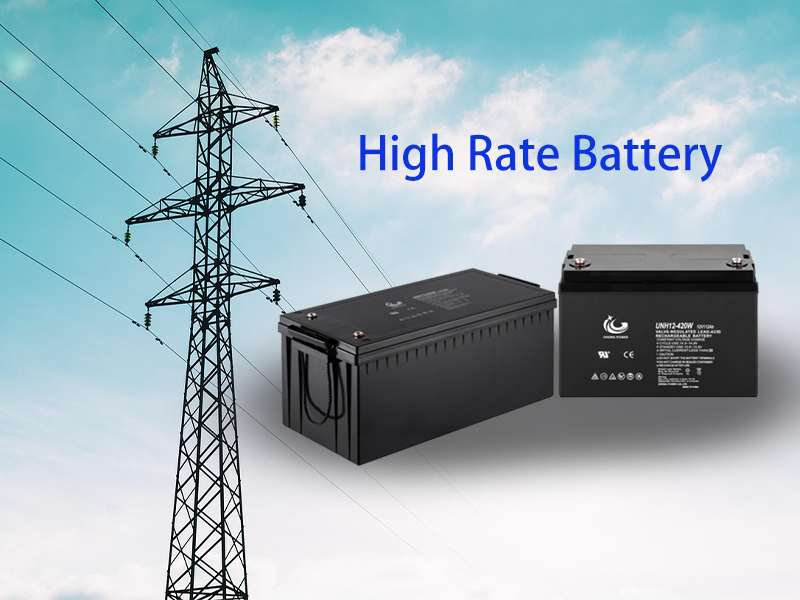Uninterruptible Power Supply (UPS) systems are the backbone of modern critical infrastructure, protecting sensitive electrical equipment—from data center servers to medical devices—against power outages, voltage sags, and surges. Their ability to deliver instant backup power depends entirely on integrated energy storage, making high-quality UPS Batteries a must for engineers and facility managers.
Effective UPS operation requires batteries that discharge energy rapidly, a need met by the High Rate Battery. This specialized technology delivers high current outputs without sacrificing capacity or long-term reliability. Unlike standard batteries (optimized for slow discharge in consumer use), High Rate Batteries are designed for UPS systems’ “instant-on” demand: when grid power fails, they immediately supply enough power to bridge the gap until backup generators start or operations shut down safely.
Low internal resistance is key to this performance. By reducing resistance in the cell, High Rate Batteries minimize energy loss as heat during discharge, ensuring nearly all stored energy reaches the UPS and connected loads. Advanced electrode materials and precision active material formulations boost this efficiency further—they enhance rapid discharge and improve charge acceptance, letting the battery recharge quickly once grid power returns (critical for UPS systems facing frequent short outages).

Robust construction defines UPS-grade High Rate Batteries. UPS applications expose batteries to harsh conditions: repeated charge-discharge cycles, temperature changes, and occasional high surge currents when large loads restart. Manufacturers address this with reinforced casings, corrosion-resistant terminals, and extra structural supports. For large UPS setups, the High Rate Battery pack—individual High Rate Batteries wired in series/parallel to meet voltage/capacity needs—often includes thermal management and monitoring systems to ensure uniform performance and early detection of cell issues.
The 12V UPS Battery is widely used in medium-to-large UPS systems. Its voltage matches many UPS inverters’ input requirements, simplifying integration and reducing the number of batteries in a pack. 12V UPS Batteries using High Rate technology work with both lead-acid (e.g., maintenance-free AGM) and lithium-ion chemistries, offering flexibility to prioritize low cost (lead-acid) or long life/high density (lithium-ion).
For space-efficient, easy-to-maintain setups, Front Terminal Batteries are a game-changer. Unlike traditional top-terminal batteries (needing top access for installation/testing), Front Terminal Batteries have front-placed terminals. This allows dense rack mounting (vital for space-constrained data centers) and lets technicians run checks (voltage testing, terminal inspection) without removing the battery from the rack. Paired with High Rate technology, Front Terminal Batteries combine space-saving design with the rapid discharge UPS systems need, making them ideal for modular UPS architectures.
In short, UPS reliability is tied to battery technology advancement. From the High Rate Battery’s instant power to Front Terminal Batteries’ space efficiency and the 12V UPS Battery’s integration ease, each component solves unique UPS challenges. As critical infrastructure relies more on continuous power, advanced UPS Batteries—whether standalone or in High Rate Battery packs—will grow in importance, driving innovations in material science, cell design, and system integration to meet evolving demands.
